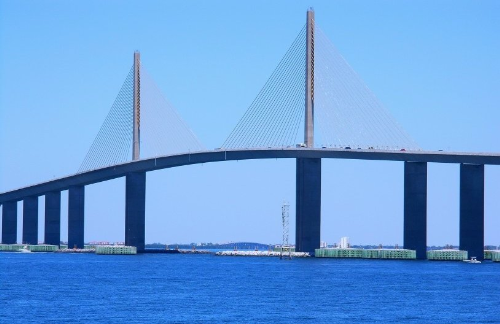Article
Solve Riddle Of Red Tide Or Tourism Will Drop Even MoreTampa Tribune
Tampa,
March 3, 2007
Most people blame the decline in Florida tourism last year on a fear of hurricanes, rising gas prices, insurance-spiked hotel rates and the security obstacles facing international visitors since Sept. 11, 2001.
Red tide's an economic killer, too. One estimate puts the toll of its harmful blooms at $82 million a year.
Most people blame the decline in Florida tourism last year on a fear of hurricanes, rising gas prices, insurance-spiked hotel rates and the security obstacles facing international visitors since Sept. 11, 2001.
Red tide's an economic killer, too. One estimate puts the toll of its harmful blooms at $82 million a year. The organism ruins commercial and recreational fishing on Florida's Gulf Coast and causes shellfish harvests to be banned. When dead fish pile up on beaches and toxins sting the eyes and throats of visitors, tourism sinks at coastal businesses. And new studies show red tide poses a serious health threat, particularly to people with respiratory problems. It can affect people several miles away from the water and last for days. Outbreaks of red tide, once relatively rare, are becoming more frequent and severe, which many locals attribute to increased water pollution. Scientists have not verified that, but it seems a reasonable conclusion since the nutrients in runoff feed algae growth. Given the economic threat posed by red tide, it's shocking how little is known about its development or about ways to mitigate its destruction. Fortunately, leaders are starting to pay attention. Last year, state lawmakers increased research funding from $3 million to $5 million, which still seems like a drop in the bucket. But now U.S. Reps. Kathy Castor of Tampa, Connie Mack of Fort Myers and Vern Buchanan of Sarasota are teaming up on a proposal to capture $90 million over three years to research red tide and other harmful algae blooms. The money would be awarded on a competitive, peer-reviewed basis, and managed by a task force of scientists from various federal agencies that annually reports study results to Congress. Scientists at Mote Marine Laboratory at Longboat Key and USF-St. Petersburg's marine biology center should be first in line with proposals to research red tide's poisonous riddles. So far, they know the organism maintains a small, constant presence in the ocean, but they can't explain what triggers it to suddenly multiply. They know it's a natural event that occurred long before the state was developed, but they don't know why it appears to have become more common and virulent, though water pollution is an obvious suspect. They also know certain materials, such as bleaches and copper sulfates, can neutralize the toxin, but they don't know if broad applications are practical or desirable because of environmental concerns. The goal of the congressional proposal is to put real money toward solving red tide's mysteries and mitigating its carnage. Florida's entire congressional delegation should endorse this proposal. As Mack says, "The sooner we can understand what factors may contribute to red tide, the sooner solutions can be developed to ensure red tide will not devastate our coastline and economy." |


